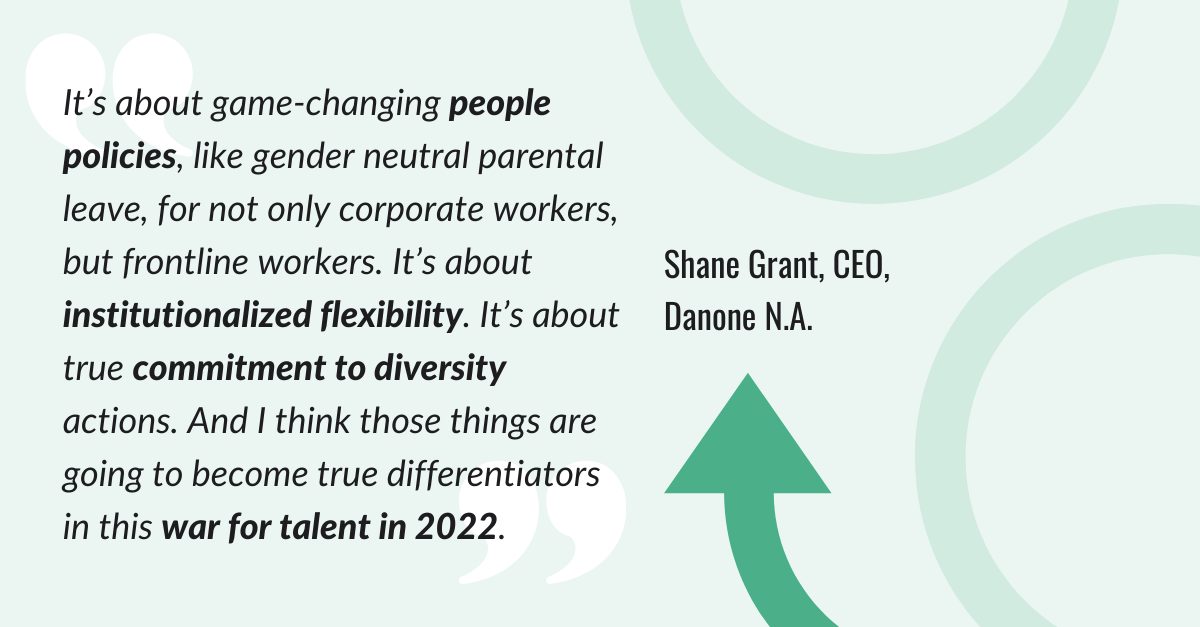Topics
5 L&D Trends Top of Mind in 2022

Proactive Planning Drives L&D
The world looks very different than it did just a few years ago. As circumstances continue to change, organizations can no longer afford to rely on previous learning strategies and materials. Instead, they need to proactively explore new approaches. And enterprise Learning and Development (L&D) teams are well-positioned to lead these transformations.
Based on a survey of 264 L&D professionals, across a mix of company sizes and industries, our Enterprise Learning 2022 Annual Report illustrates a shift to proactive planning to prepare organizations for working in the next normal. And it’s all in service of the customer, whether your customers are employees, other businesses or end consumers.
In our first of a series of blogs that aim to dig into key trends in the report, we will offer a look at the top 5 drivers steering L&D this year. Let’s examine where teams will be putting their time, treasure and training.
#1 – Executive Direction/Business Requests
For the first time in the seven years since we’ve conducted the trends survey, Executive Direction/Business Manager Requests was almost bumped from the #1 slot at driving learning and training strategies. But at 28 percent, it still ranks top. In times of change and disruption, L&D is still looking to leadership to determine the direction. After all, the business’s goals and strategy should inform what skills and staff are needed to achieve success. However, as we dig into driver #2, we’ll see that there are many internal artifacts that are holding L&D and businesses back in their quests for transformation.
#2 – Updated Materials and Technology
What’s old should be made new. Nearly tied with executive direction in steering L&D is the need to update outdated learning materials, formats and technology (27 percent). While updating materials has always been important, this is the highest it has ever scored in our survey. And with so many L&D professionals selecting this as their number one priority, it shows how learning, training and the tools at the core of this practice are in the midst of an evolution.
It’s clear that more mobile, remote and hybrid working environments are necessitating looking at updating when, where, how and how often employees are trained for best results and retention. And adopting fast, easy, interactive technologies and agile strategies to geographically dispersed staff are the answer. Consider these results from our survey:
- 75 percent of respondents plan to increase use of video for learning in 2022
- 50 percent plan to increase use of collaborative/immersive tech, such as augmented reality, VR and mixed reality
- 35 percent will increase use of microlearning, such as text-based learning
#3 and #4 – Internal and External Changes
Change, both internal and external, ranks #3 and #4 collectively making up 18% of L&D’s strategic drivers. In our survey, new internal processes, needs or gap analyses became a larger driver. This increase could indicate that business leaders are implementing shifts based on all the external change that’s been happening over the past two years.
Yet, leaders are still keeping an eye on additional external changes. Some 79 percent of respondents in our survey stated that current (or future expected) market conditions will continue to alter their company’s products or services in 2022.
Amid the many external and internal changes, L&D professionals are being much more proactive than they have been as compared with the past few years. For 2022, 64 percent have a proactive plan in place to manage major events (e.g., mergers and acquisitions, technology changes and market shifts) that could affect employees or internal knowledge sets. In the prior year, 50 percent had a proactive plan, and only 38 percent did in 2020. This trend is especially prevalent for companies in the technology sector, where 88 percent say they have a proactive plan.
#5 – Diversity, Equity and Inclusion
Diversity, Equity and Inclusion (DEI) initiatives as a driver reflects modern social and societal shifts toward creating an intentional culture. DEI is a lot easier to write about than to achieve, yet it’s one that most companies are working to build. And an inclusive culture has many benefits, including:
- Overall social-societal improvements
- Greater innovation and creativity
- Increased profitability
- Improved reputation and brand awareness
In today’s market, companies are competing not only for customers, but also talent. An inclusive culture is one part of attracting and retaining the best staff.
“The war on talent in 2022 is going to only intensify,” said Danone N.A. CEO Shane Grant. “It’s about game-changing people policies, like gender neutral parental leave, for not only corporate workers, but frontline workers. It’s about institutionalized flexibility. It’s about true commitment to diversity actions. And I think those things are going to become true differentiators in this war for talent in 2022.”

All Together Now
It’s important to note that there is also some interplay among these learning drivers. The ongoing COVID-19 pandemic and labor market challenges can influence executive direction, such as establishing remote or hybrid work policies and developing digital business journeys, all of which can require new training materials and new ways of delivering learning modules.
In terms of new internal work policies, nearly two-thirds of high-growth companies are using a “productive anywhere” approach, where the focus is on “a healthy and productive workforce, regardless of physical location,” according to Accenture.
So, if more companies want to join their high-growth peers, they may need to take actions like revamping learning materials to allow employees to learn from anywhere.
Get the Full Report
Looking for more insights into how L&D teams are investing their time, talent and budgets in 2022? Our infographic, 4 Statistics for Leading L&D in 2022, illustrates key takeaways from the full report!

